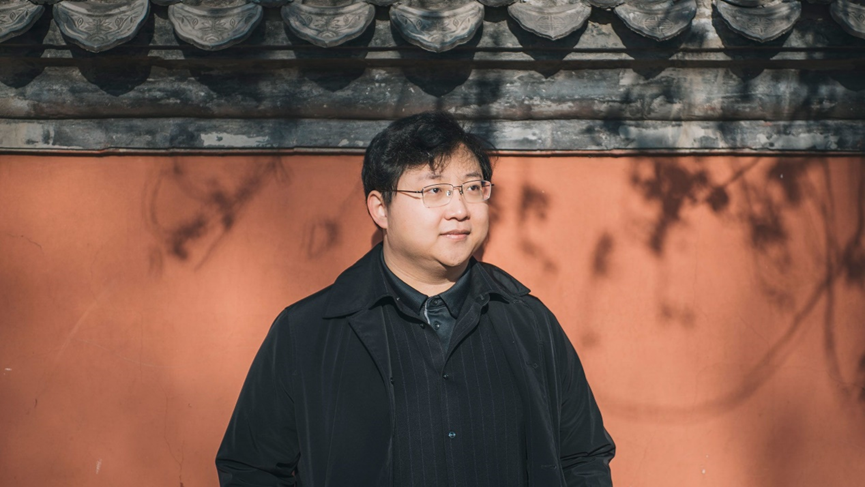Photo credit: Yufan Lu for Nature
Editor’s note: On December 15 (Beijing Time), the prestigious scientific publication
Nature published its annual list to recognize the “ten people who helped shape science in 2022.” This year’s
Nature’s 10 list explores “key developments in science” and “some of the people who played important parts in these milestones,” according to the scientific journal. Cao Yunlong, a researcher at Peking University’s (PKU)
Biomedical Pioneering Innovation Centre (BIOPIC) and a member of the research team led by PKU professor
Xiaoliang Sunney Xie, is recognized on the list for “his rich characterizations of emerging variants,” which have “allowed researchers to keep step with SARS-CoV-2 as it evolves.”
Peking University, December 15, 2022: When Cao Yunlong returned to China in late 2019 from the United States, he hoped to build on his doctoral research in single-cell genomics. But shortly after he settled into his research-associate position at Peking University in Beijing, the city went into lockdown.
Cao and his adviser, biophysical chemist Xiaoliang Sunney Xie, found their laboratory emptied of technicians and students. Confronted with the prospect of stopping work, Cao realized that the methods he had specialized in could be used to study the antibodies triggered by infection with SARS-CoV-2. “I never thought I would pursue immunology and virology,” says Cao.
Now, as scientists watch a fresh COVID-19 wave circle the globe — fuelled by a chaotic mix of SARS-CoV-2 variants, descended from Omicron — Cao’s work offers a glimmer of hope for staying half a step ahead of the virus’s wild evolution. By probing people’s antibodies in exquisite detail, his team has managed to predict many of the mutations that define this ‘variant soup’.
“It’s been an absolute tour de force,” says Laura Walker, an immunologist and chief scientific officer at the biopharmaceutical company Invivyd in Waltham, Massachusetts, who has also been trying to predict Omicron’s evolution. “They’ve been putting us to shame with the depth and breadth of their studies.”
Cao — who leads much of the COVID-19 work in Xie’s group — started his pandemic efforts by screening people who had recovered from COVID-19 for antibodies that could be used in treatment. Working with a Chinese drug company, the group picked two of the most potent infection-blocking, or neutralizing, antibodies and began trialling them in people with COVID-19.
Early results looked good, but the drug company halted development after scientists in South Africa identified the Beta variant in late 2020. This immune-evading variant harboured mutations that made it impervious to one ingredient of Cao’s antibody cocktail and blunted the potency of a second. “I started to think, ‘Damn, there must be a better way to do this,’” Cao says.
He wondered whether, instead of creating therapies based on the strongest antibodies, he could identify which antibodies were most resilient to viral change. He was inspired by a study that described how nearly every possible change to the receptor-binding domain of the SARS-CoV-2 spike protein — roughly 4,000 amino-acid combinations — affected its ability to attach to host cells and infect them.
But that study — led by evolutionary virologist Jesse Bloom at the Fred Hutchinson Cancer Center in Seattle, Washington — involved just one protein. Cao wanted to do the same type of study to track how the virus might evolve to evade hundreds, even thousands, of antibodies. This would take years using conventional techniques, Cao says, so he developed a high-throughput method to do it in weeks.
The effort showed, in fine detail, how the virus could respond to antibody pressure. It also identified the mutations that provide the most bang for buck in dodging immunity. And the approach allowed Cao’s team to study how exposure to different variants affects the antibodies that people produce. For instance, those who had recovered from Omicron BA.1 made neutralizing antibodies that could be overcome by spike protein mutations present in Omicron BA.5, which swept the world in the first half of this year.
Cao’s team predicted the key mutations that would define many of the variants currently circulating, by studying antibodies from people who had recovered from BA.5, its ancestor BA.2 and earlier variants. These forecasts allowed the team to assess variants’ abilities to evade immunity shortly after they’d been identified, and often weeks before other teams. “This is the first time, I believe, we are ahead of the virus,” Cao says.
His team has been on the bleeding edge of generating experimental data on new variants, says Bloom, as well as rapidly sharing that information through preprints, social media and virus-tracking websites.
Cao and his colleagues are now looking to design new antibody therapies, identifying those that are most resilient to viral evolution. Cao says he’s guided by his undergraduate background in physics as he tries to stay ahead of the virus: “Only by making predictions that work does this show you understand the system,” he says.
Source: Nature
Edited by: Meng Bin
